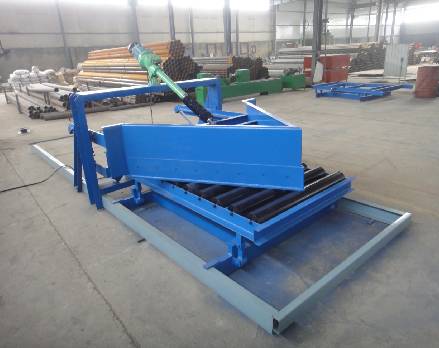 Afrikaans
Afrikaans  Albanian
Albanian  Amharic
Amharic  Arabic
Arabic  Armenian
Armenian  Azerbaijani
Azerbaijani  Basque
Basque  Belarusian
Belarusian  Bengali
Bengali  Bosnian
Bosnian  Bulgarian
Bulgarian  Catalan
Catalan  Cebuano
Cebuano  Corsican
Corsican  Croatian
Croatian  Czech
Czech  Danish
Danish  Dutch
Dutch  English
English  Esperanto
Esperanto  Estonian
Estonian  Finnish
Finnish  French
French  Frisian
Frisian  Galician
Galician  Georgian
Georgian  German
German  Greek
Greek  Gujarati
Gujarati  Haitian Creole
Haitian Creole  hausa
hausa  hawaiian
hawaiian  Hebrew
Hebrew  Hindi
Hindi  Miao
Miao  Hungarian
Hungarian  Icelandic
Icelandic  igbo
igbo  Indonesian
Indonesian  irish
irish  Italian
Italian  Japanese
Japanese  Javanese
Javanese  Kannada
Kannada  kazakh
kazakh  Khmer
Khmer  Rwandese
Rwandese  Korean
Korean  Kurdish
Kurdish  Kyrgyz
Kyrgyz  Lao
Lao  Latin
Latin  Latvian
Latvian  Lithuanian
Lithuanian  Luxembourgish
Luxembourgish  Macedonian
Macedonian  Malgashi
Malgashi  Malay
Malay  Malayalam
Malayalam  Maltese
Maltese  Maori
Maori  Marathi
Marathi  Mongolian
Mongolian  Myanmar
Myanmar  Nepali
Nepali  Norwegian
Norwegian  Norwegian
Norwegian  Occitan
Occitan  Pashto
Pashto  Persian
Persian  Polish
Polish  Portuguese
Portuguese  Punjabi
Punjabi  Romanian
Romanian  Russian
Russian  Samoan
Samoan  Scottish Gaelic
Scottish Gaelic  Serbian
Serbian  Sesotho
Sesotho  Shona
Shona  Sindhi
Sindhi  Sinhala
Sinhala  Slovak
Slovak  Slovenian
Slovenian  Somali
Somali  Spanish
Spanish  Sundanese
Sundanese  Swahili
Swahili  Swedish
Swedish  Tagalog
Tagalog  Tajik
Tajik  Tamil
Tamil  Tatar
Tatar  Telugu
Telugu  Thai
Thai  Turkish
Turkish  Turkmen
Turkmen  Ukrainian
Ukrainian  Urdu
Urdu  Uighur
Uighur  Uzbek
Uzbek  Vietnamese
Vietnamese  Welsh
Welsh  Bantu
Bantu  Yiddish
Yiddish  Yoruba
Yoruba  Zulu
Zulu conveyor side guide
The Importance of Conveyor Side Guides in Material Handling Systems
In today's fast-paced industrial environments, efficiency and safety are paramount. Conveyor systems play a crucial role in streamlining the movement of materials, whether in manufacturing, distribution, or logistics. Among the many components that contribute to a conveyor's effectiveness, side guides are often overlooked, yet they serve a vital function in ensuring the smooth and safe operation of these systems.
What Are Conveyor Side Guides?
Conveyor side guides, often made of materials such as plastic, metal, or rubber, are devices that run parallel to the conveyor belt's edges. Their primary purpose is to help align and control the flow of materials, preventing them from drifting off the sides of the conveyor. Side guides are essential for maintaining the integrity of the materials being transported, especially in high-speed operations where misalignment can lead to significant losses and safety hazards.
Enhancing Safety
One of the crucial advantages of conveyor side guides is their ability to enhance safety within the workplace. When materials fall off the conveyor, they can create obstacles that may pose a risk to workers and machinery. Side guides effectively contain products within the conveyor's confines, reducing the risk of accidents and ensuring that items stay securely in place. This is particularly vital in environments where heavy or hazardous materials are being transported, as preventing spills can mitigate potential danger.
Improving Efficiency
Efficiency is another critical area where conveyor side guides make a difference. By keeping materials on track, side guides help maintain a steady flow of products, reducing the likelihood of bottlenecks. In production lines, for instance, interruptions caused by misaligned items can slow down operations, leading to increased downtime and decreased productivity. By utilizing side guides, companies can ensure a continuous and efficient production process, maximizing throughput and ultimately enhancing profitability.
Types of Side Guides
conveyor side guide

Conveyor side guides come in various types and sizes, allowing customization based on specific operational requirements. Some common types include
1. Fixed Side Guides These are permanently mounted on the conveyor frame and provide a robust barrier for materials. They are ideal for straight-line conveyor systems where the product flow remains consistent.
2. Adjustable Side Guides For conveyors that handle a variety of products, adjustable side guides offer flexibility. They can be repositioned based on the size of the items being transported, accommodating different widths and shapes.
3. Pivoting Side Guides Designed for systems that require frequent changes in product type, pivoting side guides can move in and out of position. This design is particularly useful in environments where product dimensions vary significantly.
Maintenance Considerations
To ensure optimal performance of conveyor side guides, regular maintenance and inspection are necessary. Accumulation of debris and wear over time can reduce their effectiveness. Periodic checks should be conducted to ensure that side guides are properly aligned, securely attached, and free from damage. Addressing any issues promptly can prevent more significant problems down the line and keep operations running smoothly.
Conclusion
Conveyor side guides may seem like a small component in the vast system of material handling, but their impact on safety and efficiency is profound. As industries continue to evolve and demand for streamlined processes increases, understanding and implementing effective conveyor side guide solutions will be essential. By prioritizing the use of side guides, companies can enhance their operational reliability, ensuring that products move swiftly and safely from point A to point B. Ultimately, investing in the right side guide systems can lead to significant improvements in both operational performance and workplace safety.
-
Revolutionizing Conveyor Reliability with Advanced Rubber Lagging PulleysNewsJul.22,2025
-
Powering Precision and Durability with Expert Manufacturers of Conveyor ComponentsNewsJul.22,2025
-
Optimizing Conveyor Systems with Advanced Conveyor AccessoriesNewsJul.22,2025
-
Maximize Conveyor Efficiency with Quality Conveyor Idler PulleysNewsJul.22,2025
-
Future-Proof Your Conveyor System with High-Performance Polyurethane RollerNewsJul.22,2025
-
Driving Efficiency Forward with Quality Idlers and RollersNewsJul.22,2025





























